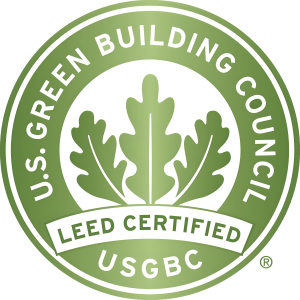Are you planning to achieve LEED project certification before the end of the year? If so, be sure to submit your project for review by GBCI’s application deadlines, which are based on typical review timelines.
Regardless of when a deadline occurs, all project teams hoping to achieve review milestones by a certain date should inform GBCI of their specific needs as early as possible. Several of our programs offer an expedited review timeline option.
Please note that typical timelines assume that no midreview clarifications or supplemental (appeal) reviews are necessary, and payment must clear before the review can begin. GBCI will provide a review report within 20-25 business days from the day the review commenced. The schedules in the tables below assume that project teams submit clarifications within 25 business days after receiving review results from GBCI. In addition,
• The following deadlines apply to all applications for LEED for Building Design and Construction (LEED BD+C), LEED for Interior Design and Construction (LEED ID+C), LEED for Operations and Maintenance (LEED O+M, initial and recertification), LEED for Cities and Communities, LEED Zero certification, and LEED residential.
• The review timelines below do not apply to LEED volume prototypes or any large batches of projects submitted at one time, which do not follow the 20-25 business-day turnaround time. If your team is planning on submitting projects under LEED volume or planning on submitting more than five applications at one time, please inform GBCI as soon as possible.
• Certification timelines for projects using any of the LEED residential rating systems do not consider any optional prereviews. If you intend to submit an energy model, ventilation calculator, or outdoor water demand calculator for prereview, please allow sufficient time for two rounds of review to be completed in advance of the workbook submission deadlines.
Please note that all dates provided below assume that applications are submitted and payment has been remitted by 9 a m. ET on the date listed. Dates are approximate and are not guaranteed. Please use them as a guide only.
Expedited reviews typically take 10-12 business days and are subject to additional fees. Both the certification review fee and the expedited review surcharge must be remitted before review can commence. The availability of expedited review timelines is based on GBCI capacity. If you are requesting an expedited review, contact GBCI at least 10 business days prior to submitting your application. Expedited review timelines assume 10 business days after the preliminary review is returned for project teams to prepare clarifications and submit them for final review. Please note that expedited timelines assume that no midreview clarifications or supplemental (appeal) reviews are necessary.
https://www.usgbc.org/articles/what-you-need-know-achieve-leed-certification-2025









